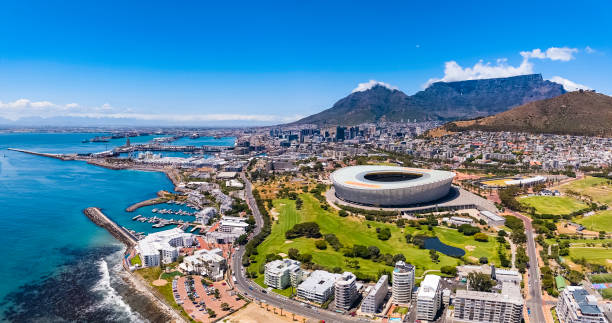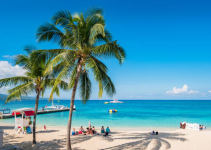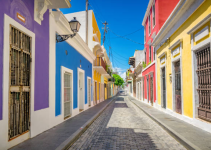You’ve booked your safari. The excitement is real. But now you’re staring at an empty suitcase, wondering what actually matters out there.
Here’s the thing: packing for a South African safari isn’t like packing for a beach vacation or a city break. You’ll be in the bush, where the sun is fierce, the dust gets everywhere, and you’re chasing golden-hour wildlife sightings. Your choices matter.
What you bring can make the difference between catching that perfect leopard photo and fumbling with the wrong gear. Between staying comfortable during long game drives and wishing you’d thought things through better. Let’s make sure you get it right.

Things to Take with You on a Safari in South Africa
Your safari experience depends heavily on being prepared for the unique environment you’re stepping into. Here are the ten essential items that will help you make the most of your adventure.
1. Binoculars (And Yes, They’re Non-Negotiable)
You might think you can just rely on your camera zoom or trust that animals will come close enough to see clearly. That’s a mistake. Even the best safari guides can’t control where animals decide to hang out, and sometimes that elephant herd is grazing 200 meters away across a riverbed.
Get binoculars with 8×42 or 10×42 magnification. These numbers mean something practical: the first tells you how much closer things appear, the second is about how much light gets in. You want that balance because early morning and late afternoon drives happen during low light. Those are also when animals are most active.
Good binoculars let you spot a distant cheetah on a termite mound, watch birds doing their thing in the canopy, and actually see the expressions on a lion’s face from a respectful distance. Your ranger will point out animals you’d never notice with your naked eye. Without binoculars, you’re missing half the show. They don’t need to cost a fortune, but don’t grab the cheapest pair at a gas station either. Mid-range options from brands like Bushnell or Celestron do the job perfectly well.
2. Neutral-Colored Clothing (Seriously, Leave the Neon at Home)
Animals notice bright colors. You don’t want to be the person in a hot pink shirt spooking a herd of zebras because you stand out like a traffic cone. Safari clothing serves a purpose beyond looking the part for Instagram photos.
Stick with khaki, olive green, brown, and tan. These colors help you blend into the environment, which matters more than you’d think during walking safaris or when your vehicle stops near skittish wildlife. Dark colors like navy and black work too, though they absorb heat like nobody’s business.
Here’s what actually works: lightweight, long-sleeved shirts and long pants in breathable fabrics. Yes, even though it gets hot. Long sleeves protect you from the sun, which is brutal in South Africa, and from insects that come out during dawn and dusk drives. Cotton feels nice, but takes forever to dry if you sweat or wash it. Go for synthetic blends or merino wool instead.
Pack layers because morning drives can start at 5:30 AM when it’s genuinely cold, then by 9 AM you’re peeling everything off. A fleece jacket and a windbreaker handle those temperature swings. And bring a wide-brimmed hat. The African sun doesn’t mess around, and sunscreen alone won’t cut it when you’re exposed for hours.
3. A Solid Camera with a Decent Zoom Lens
Your phone camera is impressive for everyday shots. But safari photography? That’s a different beast. You need reach, and you need it badly.
If you have a DSLR or mirrorless camera, bring it with a telephoto lens. Something in the 200-400mm range gives you the flexibility to capture animals without needing them right next to your vehicle. A 70-300mm lens is a popular budget-friendly option that still delivers.
Don’t have a big camera? That’s okay. Some high-end compact cameras and bridge cameras have incredible zoom capabilities now. The Sony RX10 series, for example, can get you surprisingly close to the action. What matters most is having enough zoom to fill your frame with a lion lounging under a tree 50 meters away.
Bring extra memory cards and batteries. You’ll shoot way more than you think. That moment when a herd of buffalo crosses your path or a giraffe bends down to drink? You want to capture it from every angle. Battery life drains faster in extreme temperatures too. Keep spares charged and ready. Most lodges have electricity for charging, but power adapters vary, so pack the right ones for South African outlets (Type M, the big three-pin plugs, or Type C/N).
4. Sun Protection That Actually Works
The African sun hits different. You’re closer to the equator, the UV index regularly reaches extreme levels, and you’re spending entire days outside with minimal shade.
Bring high SPF sunscreen, 50 or higher, and reapply it constantly. Your face, neck, ears, and hands take the most punishment during game drives. Get a lip balm with SPF, too because chapped, sunburned lips make everything miserable. Physical sunscreens with zinc oxide or titanium dioxide often work better than chemical ones, especially if you have sensitive skin.
Sunglasses aren’t optional. Polarized lenses cut the glare, which helps when you’re scanning open plains or looking across water. They also reduce eye strain during those long drives. Make sure they have UV400 protection.
That wide-brimmed hat I mentioned earlier? It’s doing serious work. A baseball cap leaves your ears and neck exposed. A safari hat with a brim all around keeps the sun off your face, ears, and the back of your neck. Some come with chin straps, which help when the wind picks up in an open vehicle.
Your skin will thank you. Sunburn ruins day two of a safari, and it’s completely avoidable with the right prep.
5. Insect Repellent (Because Mosquitoes Don’t Care About Your Vacation)
Malaria is present in some parts of South Africa, particularly Kruger National Park and other low-altitude game reserves. You’ll likely take antimalarial medication (talk to your doctor before you go), but that doesn’t mean you should skip the insect repellent.
Use something with DEET, at least 30% concentration. Picaridin is another effective option if you don’t like DEET. Natural repellents with citronella or eucalyptus oil? They’re better than nothing, but they don’t last as long and need frequent reapplication.
Apply it before dawn and dusk drives. Mosquitoes are most active during these times, which unfortunately coincide with the best game viewing hours. Spray your clothes too, not just your skin. Some people pre-treat their safari clothes with permethrin, which lasts through several washes and provides extra protection.
Ticks are another concern. Check yourself after walking safaris or any time you’ve been in tall grass. They’re sneaky and can carry diseases. Long pants tucked into socks look dorky, but keep ticks from crawling up your legs. Function over fashion out here.
6. A Comfortable Daypack for Game Drives
You need something to carry your gear during those multi-hour drives. A small backpack or daypack works perfectly. Think 15-20 liters, nothing huge.
What goes in it? Your camera, extra lenses, binoculars, sunscreen, insect repellent, a water bottle, snacks, phone, charging cables, tissues or wet wipes, and maybe a small notebook if you like jotting down what you see. Keep it organized because you don’t want to be digging around for your lens cap while a leopard is doing something photogenic.
Choose something with padded straps and a chest strap if possible. Game drive vehicles bounce over rough terrain, and your pack needs to stay secure. Dark colors work best, again, to avoid standing out. Some lodges provide storage pouches in the vehicles, but having your own bag means everything stays together and accessible.
Make sure it’s easy to open and close quietly. Velcro rips loudly and can startle animals. Zippers are better. You want to move quietly and smoothly when wildlife is near.
7. A Reliable Flashlight or Headlamp
Safari camps and lodges keep outdoor lighting minimal to preserve the natural environment and avoid disturbing wildlife. That means walking from your room to the main lodge at night involves some seriously dark paths. You’ll need your own light source.
A headlamp is ideal because it keeps your hands free. Get one with a red light option. Red light doesn’t mess with your night vision or disturb animals as much as white light. It’s also less likely to attract insects to your face.
Your phone flashlight works in a pinch, but it drains your battery, and you’ll probably need that battery for other things. Plus, phones are easier to drop when you’re navigating uneven ground in the dark.
Some lodges escort guests after dark because larger animals sometimes wander through the property. Buffalo, elephants, and hippos don’t always stay in the bush. Your flashlight helps you see where you’re walking, but listen to your guide’s instructions about when and how to use it.
Pack spare batteries. Rechargeable headlamps are convenient, but have one charged and one backup ready.
8. Proper Footwear (Your Feet Will Be Doing Work)
Forget fashion sandals or brand-new hiking boots. You need comfortable, broken-in shoes with good grip and support.
Closed-toe shoes are required for most safari activities. Lightweight hiking shoes or trail runners work great. They protect your feet from thorns, rocks, and curious insects while giving you the grip you need for walking safaris or navigating uneven terrain around your lodge. Make sure they’re already comfortable because new shoes and blisters don’t mix well with daily activities.
Bring a second pair. If one gets wet or uncomfortable, you have a backup. Some people pack sandals for wearing around the lodge during downtime, which makes sense. Just keep them in your room or under your chair, not on your feet during game drives.
Avoid shoes with aggressive treads caked in mud from other locations. Biosecurity matters in nature reserves. You don’t want to accidentally introduce foreign seeds or pathogens. Clean your shoes before you travel.
Socks matter too. Bring moisture-wicking socks, not cotton. Your feet stay drier and more comfortable. Pack enough pairs so you have fresh ones for each day. Wet or sweaty socks create friction and blisters faster than anything.
9. A Dust Bag for Your Electronics
Game drive vehicles kick up dust. Lots of it. Fine, red-brown dust that gets into everything. Your camera, your phone, your binoculars, all vulnerable.
A simple dust bag or protective pouch keeps your gear safer. You can use a gallon-sized zip-lock bag in a pinch, but dedicated camera pouches with padding work better. They protect against dust, unexpected splashes if you’re near water, and bumps from the vehicle.
Keep a microfiber cloth in your bag too. You’ll use it constantly to wipe dust off lenses and screens. Dust doesn’t just make your photos hazy; it can scratch lenses if you’re not careful. Blow it off first with a lens blower or brush, then wipe gently.
Some photographers bring lens cleaning solution and proper cleaning kits. If you’re serious about your gear, that’s smart. But at minimum, a clean microfiber cloth handles most situations. Keep it in a sealed bag when not using it so the cloth itself doesn’t get dusty and make things worse.
Your phone needs protection too. A good case helps, but keeping it tucked away when not in use reduces dust exposure. Nobody wants to deal with a malfunctioning phone screen when they’re trying to identify a bird species or check their photos.
10. Travel Documents and Health Essentials
This one seems obvious, but gets overlooked until the last minute. Your passport needs to be valid for at least six months beyond your travel dates. Make copies of the photo page and keep them separate from your actual passport. Take photos with your phone too, stored in a secure app or emailed to yourself.
Bring your yellow fever vaccination certificate if you’re coming from a country where yellow fever is present. South Africa requires proof. Your antimalarial prescription should be filled before you leave home. Start taking it when your doctor recommends, usually a week or two before you travel, and continue through your trip and for a period after.
Pack a basic first aid kit with bandages, antiseptic wipes, pain relievers, antihistamines for allergic reactions, and any prescription medications you take regularly. Include medication for an upset stomach because travel sometimes messes with your digestion. Anti-diarrheal tablets can save a safari day if something doesn’t agree with you.
Travel insurance documentation should be accessible. Know what your policy covers and have emergency contact numbers handy. Medical facilities in major South African cities are excellent, but you’re potentially hours from advanced care when you’re in a remote game reserve. Insurance that covers emergency evacuation is worth having.
Keep a small amount of South African Rand in cash for tips. Lodge staff, rangers, and trackers work hard to make your experience incredible. Tipping is customary and appreciated. Credit cards work at most lodges, but cash is preferred for tips.
Wrapping Up
Packing smart for your South African safari isn’t about bringing everything you own. It’s about bringing the right things that let you focus on the incredible experience unfolding around you. Each item on this list solves a real problem you’ll face out there.
Check your bags twice. Make sure you’ve covered the basics. Then get excited, because you’re about to have one of the most memorable experiences of your life.
The preparations fade into the background once you’re watching a pride of lions at sunset or hearing hyenas call in the distance. But those preparations make everything else possible.


